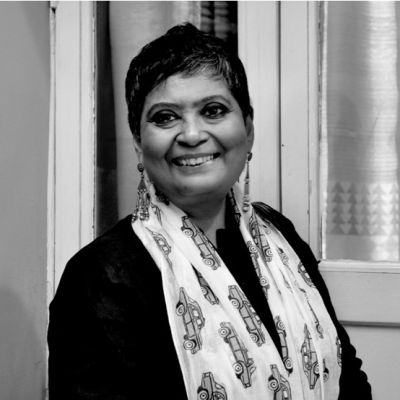Shikha Aleya
यह मेरी इन्टरनेट पर भारतीय परिवारों द्वारा और ‘परिवार और यौनिकता’ विषय पर पोस्ट की जाने वाली सामग्री को पढ़…
रत्नाबोली रे – रत्नाबोली मानसिक स्वास्थ्य विषय पर काम करने वाली ऐक्टिविस्ट, एक प्रशिक्षित मनोविज्ञानी, और अंजलि मानसिक स्वास्थ्य अधिकार…
शिखा आलेय जैस्मिन जॉर्ज TEDx स्पीकर हैं, अधिवक्ता हैं और भारत में यौन एवं प्रजनन अधिकारों की पैरोकार हैं। ये…
We need to expand the way we look at work, the workplace and the human being, understanding our approach to sexuality, society and each other.
As a society, in our platforms of exchange of goods, products and services, how are we approaching parenting, children or sexuality? Stores are clearly catering to the constructed parent and child. There’s lots of toys, clothes, diapers, bedsheets and cute dangling, fluffy things to cluck at in stores catering to parent and child as a combination thali (platter). The day I see personal and sexual hygiene products in a store catering to mom and a teenaged me, I will kick up my heels and bray.
The general attitude towards sexual fantasy, and the reflection of such fantasies in popular imagery, erotica and erotic porn is constructed on assumptions of ableism. There are other fantasies though, that reflect or are born of the sexuality of their creators and consumers, persons who do not fit into the accepted age, body or sexual identity.
The body is our tangible hacker of the world. It experiences the world and the world experiences it. I do…
As an integral aspect of the self, sexuality is at the core of home in the ways in which that home designs space for sexual being, an evolving sexual self, sexual experience and sexual expression, or does not do so, or does so for some members of the home but not for others.
There’s always another way of presenting a look, attire, accessories and bodies; of presenting the way we feel about ourselves and our sexuality, of presenting an acceptance of diversity.
Attire and sexuality in the common imagination and approach as represented (and also as received) by the mainstream media tell us a lot about prevailing attitudes to both. Advertisements bombard us with all kinds of representations, negative and positive, of human sexuality, sexual expression and desire. In the creation and marketing of attire and fashion, there is a great awareness of sexual buy-in or rejection by the market – that’s us.
I am attempting to review public conversation for and by the Indian family on Family and Sexuality on the Internet….
Often when we speak of families and family history, we talk genetics, traditions and inheritance of all kinds. Somehow our relationship by blood or otherwise to a clan is supposed to help us identify our place in the universe. So there’s family medical history, family culture, family traditions of food and career. But sexuality? A family history that focuses on sexuality? What would that even mean?
This is Part Two of a ‘public interview’ that TARSHI conducted last month, where our attempt was to collate people’s thoughts, notions, and experiences surrounding the choices they make, and the choices that are accessible to them, with regards to their sexuality.
For this March issue, we decided to interview many people, not just one, and over 350 people responded! Here are the results of a ‘public interview’ that took the form of a survey, and two polls with two questions each, on Facebook and Instagram.














